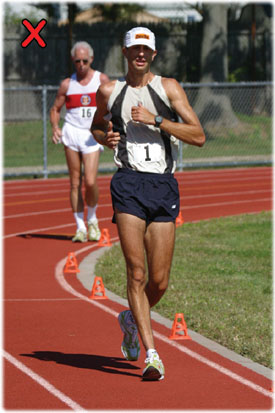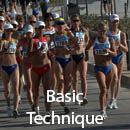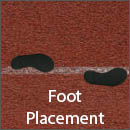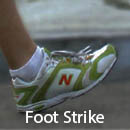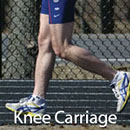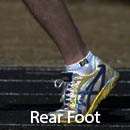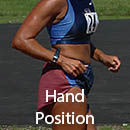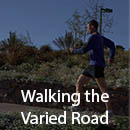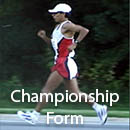Race Walking Technique
Foot Strike
When you walk with your toes pointed, you use your shin muscles more. How long you keep your toes off the ground is directly related to the strength of your shin. However, be aware that holding your toe up upon heel strike may cause a burning sensation in your shins. When you feel this soreness, stop and stretch the shins out using the Seated Shin Stretch or the Standing Shin Stretch. Slow down a little, walking with pedestrian technique; then, after a few minutes, try the new technique again. The shin pain should go away as you become better conditioned, if it does not seek assistance from a medical professional.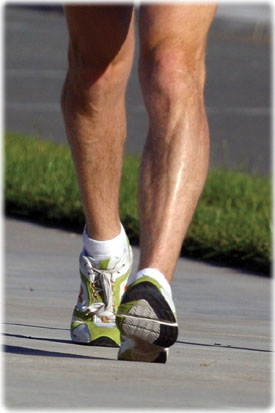
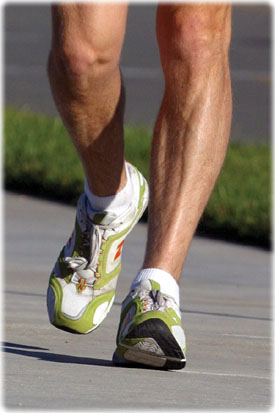
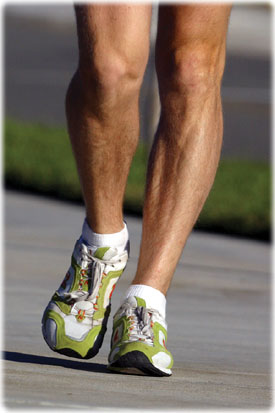
Proper planting of the foot with a smooth roll through also helps avoid premature knee bending. Prove it to yourself. Try to land flat footed with your leg straight. It’s not very easy, especially if you race walk with any speed.
Because of body build, some walkers naturally place their feet with toes pointing out or in. Observe U.S. National Team member Sean Albert in the figure to the right. Albert’s foot points outward, nearly at a 45-degree angle. It should be pointing straight ahead. Unfortunately, this foot position occurs because of body structure; it may be a contributor to the many injuries that have plagued Albert over the years.
If you face similar problems, do not try to change your foot placement as you learn to race walk. Instead, focus on using your hips properly so that your footfalls occur in a straight line, even if the feet are not parallel. While improper foot positions are less efficient, the alternative—forcing yourself to correct foot placement unnaturally—may cause extra stress on legs, feet, and knees, leading to strain and injury.
